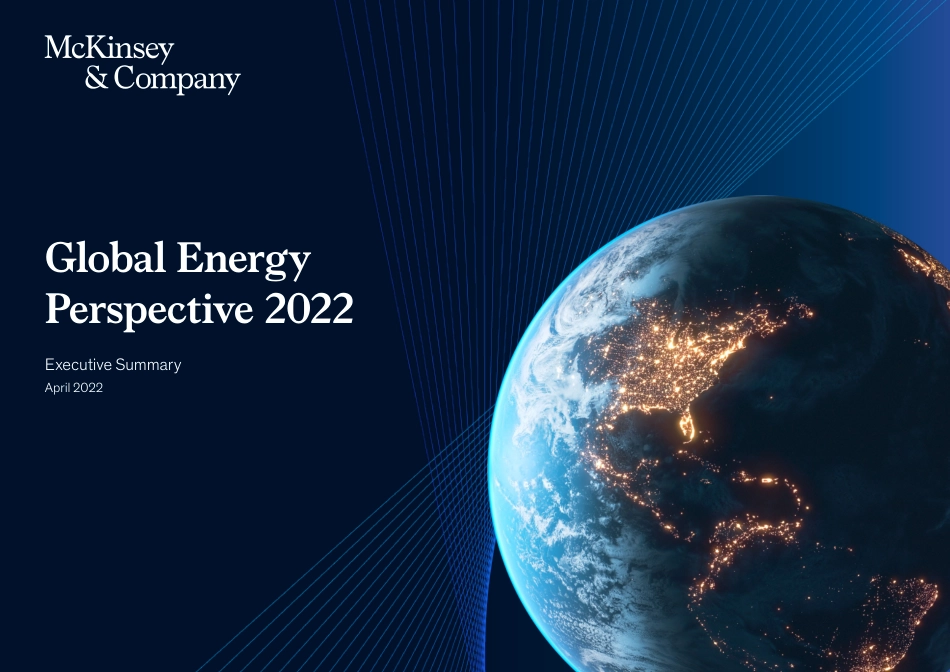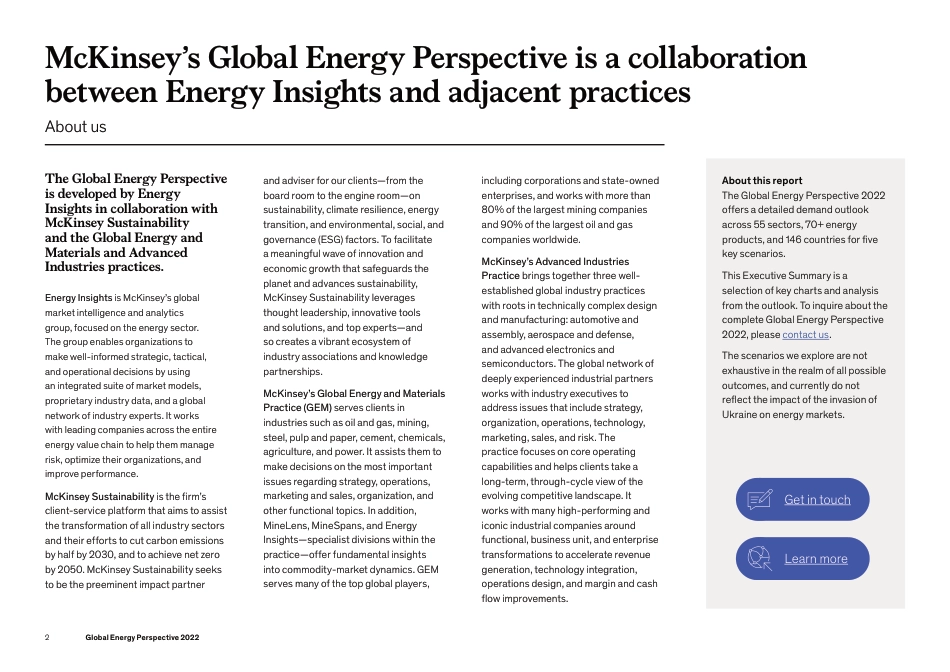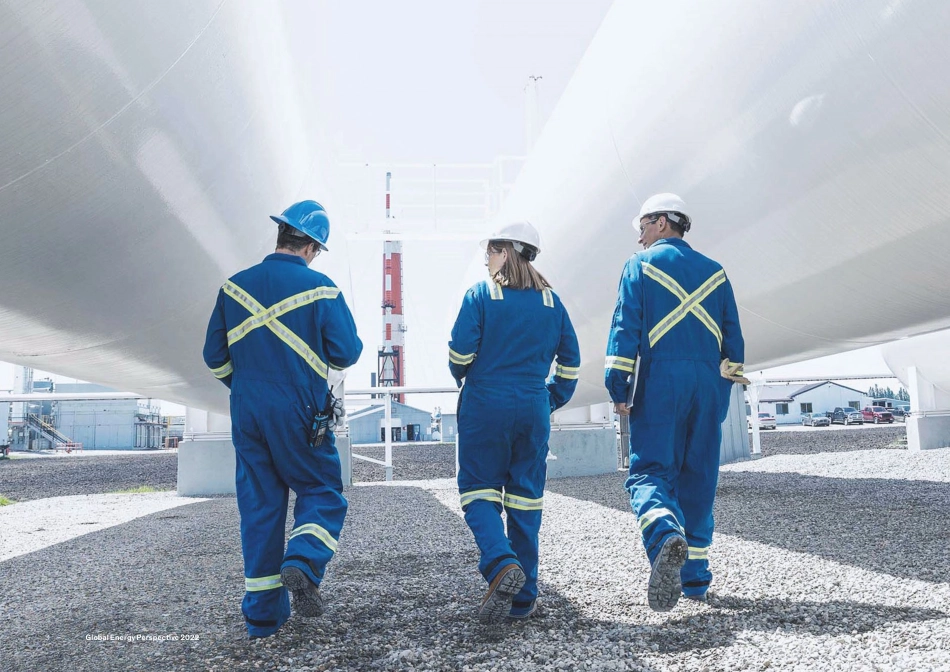Global Energy Perspective 2022Executive SummaryApril 2022McKinsey’s Global Energy Perspective is a collaboration between Energy Insights and adjacent practicesAbout usThe Global Energy Perspective is developed by Energy Insights in collaboration with McKinsey Sustainability and the Global Energy and Materials and Advanced Industries practices. Energy Insights is McKinsey’s global market intelligence and analytics group, focused on the energy sector. The group enables organizations to make well-informed strategic, tactical, and operational decisions by using an integrated suite of market models, proprietary industry data, and a global network of industry experts. It works with leading companies across the entire energy value chain to help them manage risk, optimize their organizations, and improve performance. McKinsey Sustainability is the firm’s client-service platform that aims to assist the transformation of all industry sectors and their efforts to cut carbon emissions by half by 2030, and to achieve net zero by 2050. McKinsey Sustainability seeks to be the preeminent impact partner and adviser for our clients—from the board room to the engine room—on sustainability, climate resilience, energy transition, and environmental, social, and governance (ESG) factors. To facilitate a meaningful wave of innovation and economic growth that safeguards the planet and advances sustainability, McKinsey Sustainability leverages thought leadership, innovative tools and solutions, and top experts—and so creates a vibrant ecosystem of industry associations and knowledge partnerships.McKinsey’s Global Energy and Materials Practice (GEM) serves clients in industries such as oil and gas, mining, steel, pulp and paper, cement, chemicals, ...



